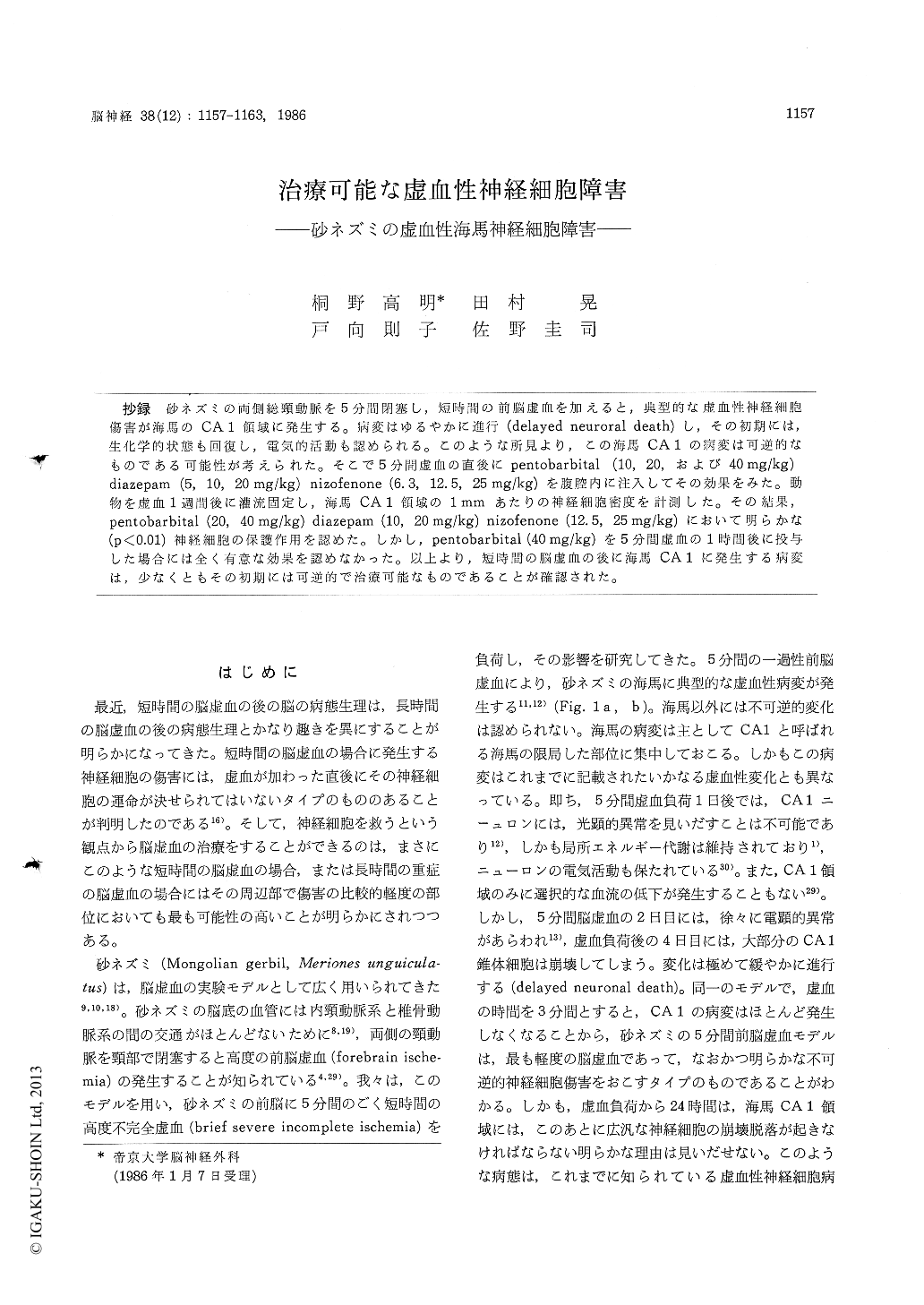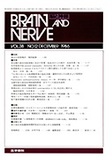Japanese
English
- 有料閲覧
- Abstract 文献概要
- 1ページ目 Look Inside
抄録 砂ネズミの両側総頸動脈を5分間閉塞し,短時間の前脳虚血を加えると,典型的な虚血性神経細胞傷害が海馬のCA 1領域に発生する。病変はゆるやかに進行(delayed neuroral death)し,その初期には,生化学的状態も回復し,電気的活動も認められる。このような所見より,この海馬CA 1の病変は可逆的なものである可能性が考えられた。そこで5分間虚血の直後にpentobarbital (10,20,および40mg/kg)diazepam (5,10,20mg/kg) nizofenone (6.3,12.5,25mg/kg)を腹腔内に注入してその効果をみた。動物を虚血1週間後に灌流固定し,海馬CA 1領域の1mmあたりの神経細胞密度を計測した。その結果,pentobarbital (20,40mg/kg) diazepam (10,20mg/kg) nizofenone (12.5,25mg/kg)において明らかな(p<0.01)神経細胞の保護作用を認めた。しかし,pentobarbital (40mg/kg)を5分間虚血の1時間後に投与した場合には全く有意な効果を認めなかった。以上より,短時間の脳虚血の後に海馬CA 1に発生する病変は,少なくともその初期には可逆的で治療可能なものであることが確認された。
The Mongolian gerbil is known to develop delay-ed neuronal death in the hippocampus following brief forebrain ischemia (Brain Res 239 : 57-69). Morphological, biochemical, or electrophysiologi-cal studies on this neuronal injury have shown that neurons still retain potential reversibility at the earlier period of alteration. To examine this possibility, immediately follwoing 5 min of ischemia in the gerbil, pentobarbital, diazepam, or nizofenone was injected. Seven days fol-lowing ischemic insult, animals were perfusion fixed and neuronal densitiy in the hippocampal CA1 subfield was counted. Most of the neurons in the CA1 sector survived ischemic insult when a drug was given, whereas most of them were lost without the treatment. The average neuronal density of treated groups showed a statistically significant (p<0.01) persistence compared with that of control group. The effective dosage of the drugs were 20-40 mg/kg in pentobarbital, 10-20 mg/kg in diazepam, and 12.5-25 mg/kg in nizofenone. On the other hand, when pentobarbital was injected 1 hr following ischemia, while neurons still remain intact morphologically, it showed no effect. This result indicates that the neuronal damage of "delayed neuronal death" type is reversible if treatment is instituted at an early period of cell change.

Copyright © 1986, Igaku-Shoin Ltd. All rights reserved.


